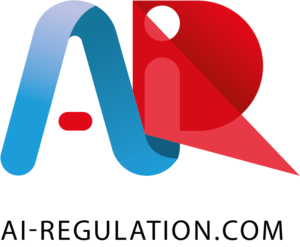September–October 2025 saw a surge of EU-level initiatives aimed at strengthening Europe’s AI governance, innovation, and digital infrastructure. From a sweeping plan to streamline digital rules, to new strategies supporting AI deployment and research, and finally to the expansion of Europe’s AI Factory network, the EU is laying the groundwork for the next phase of its AI ecosystem.
1. Digital Simplification: The EU’s Rulebook Under Review
The European Commission has launched a call for evidence to gather research and best practices for its planned Digital Omnibus — a broad initiative to simplify and streamline the EU’s digital rulebook.The consultation, was opened until 14 October 2025, seeked extensive stakeholder input across several frameworks:
- the data acquis (including the Data Governance Act, the Free Flow of Non-Personal Data Regulation);
- cookie rules under the e-Privacy Directive;
- cybersecurity incident-reporting obligations under NIS2; and;
- the application of the AI Act;
The Digital Omnibus builds on earlier initiatives — the European strategy for data, the review of the Cybersecurity Act, and the Apply AI Strategy — which together have already attracted more than 700 stakeholder submissions.
The move is part of the Commission’s broader agenda to reduce administrative burdens and costs, targeting a 25% overall reduction in reporting obligations, and 35% for SMEs.
The Omnibus marks the first step in the Digital Simplification process, to be followed by a Digital Fitness Check, a large-scale consultation assessing the entire EU digital rulebook. It will also pave the way for the AI Act Service Desk, a forthcoming one-stop platform offering interactive tools and tailored guidance on AI Act compliance.
2. €1 Billion for AI Deployment and Research: Apply AI and AI in Science Strategies
On 8 October 2025, the Commission unveiled a €1 billion plan to accelerate AI use across European industries and scientific research. The initiative is anchored in two complementary strategies — the Apply AI Strategy and the AI in Science Strategy — which together aim to bolster competitiveness and foster innovation across the Union.
The Apply AI Strategy focuses on scaling up AI adoption in industrial sectors and public services — “from more accurate healthcare diagnoses to more efficient and accessible public administration,” as the Commission put it. It seeks to shorten the path from research to market, equip Europe’s workforce with AI-ready skills, and reduce performance gaps between leading and lagging AI actors through a new Frontier AI Initiative.
Implementation will be coordinated through the Apply AI Alliance, a forum bringing together industry, academia, public authorities, and civil-society organisations. To aid regulatory compliance, the Commission also plans to launch the AI Act Service Desk, providing interactive tools and guidance to companies navigating the new AI framework.To keep Europe at the forefront of scientific innovation, the accompanying AI in Science Strategy introduces RAISE — the Resource for AI Science in Europe — a virtual institute that pools computing capacity and coordinates AI resources for researchers.
Key actions include:
- €600 million in Horizon Europe funding to expand computational access for scientists;
- doubling EU funding for AI research; and
- initiatives to attract global AI talent to European research institutions.
Both strategies form part of the AI Continent Action Plan, the EU’s long-term roadmap to accelerate AI adoption across sectors while maintaining scientific excellence and regulatory coherence.
3. EuroHPC Expands AI Factory Network Across Europe
Two days later, on 10 October 2025, the EuroHPC Joint Undertaking announced the addition of six new European AI Factories, to be deployed in Czechia, Lithuania, the Netherlands, Poland, Romania, and Spain over the coming year.
These new hubs will join the existing 13 AI Factories, forming an interconnected network of supercomputing-driven AI ecosystems designed to power innovation and strengthen Europe’s technological sovereignty.
The updated list of EuroHPC AI Factories now includes:
Austria (AIzAT), Bulgaria (BRAIN++), Czechia (CZAI), Finland (LUMI-AI), France (AIZF), Germany (JAIF, HammerHAI), Greece (PHAROS), Italy (IT4LIA), Lithuania (LitAI), Luxembourg (L-AIF), the Netherlands (NLAIF), Poland (PIAST AI, Gaia AI), Romania (RO AI), Slovenia (SLAIF), Spain (BSC AIF, 1HealthAI), and Sweden (MIMER).
(Full list: EuroHPC JU press release, 10 Oct 2025)
AI Factories are ecosystems built around AI-optimised supercomputers, offering high-performance computing, data management, and technical support to European industries and researchers. Their role is to enable the development of large-scale AI models, strengthen Europe’s digital infrastructure, and build skills and knowledge across the continent.
By extending the network to 19 factories, EuroHPC aims to make AI computing resources more geographically accessible, promoting balanced innovation across member states and reinforcing the EU’s ambition to become a global leader in trustworthy and high-performance AI.
Outlook: From Regulation to Realisation
With these initiatives — from regulatory simplification to new industrial and research strategies, and the expansion of AI infrastructure — the EU is shifting from rule-making to implementation.
As the AI Act begins to take effect in phases through 2025–2026, these complementary actions illustrate a broader effort: not just to regulate AI, but to build the capacity, infrastructure, and skills that will sustain it.
To stay informed on implementation of the EU AI Act, visit our website at AI-Regulation.com and follow us on LinkedIn, Twitter and Facebook
P. R.

